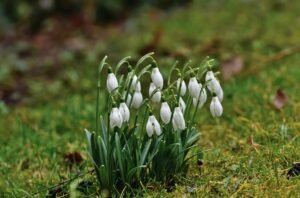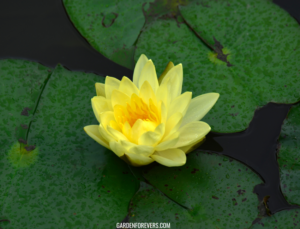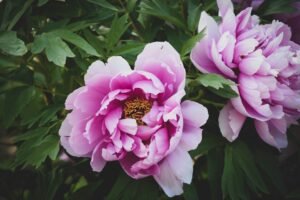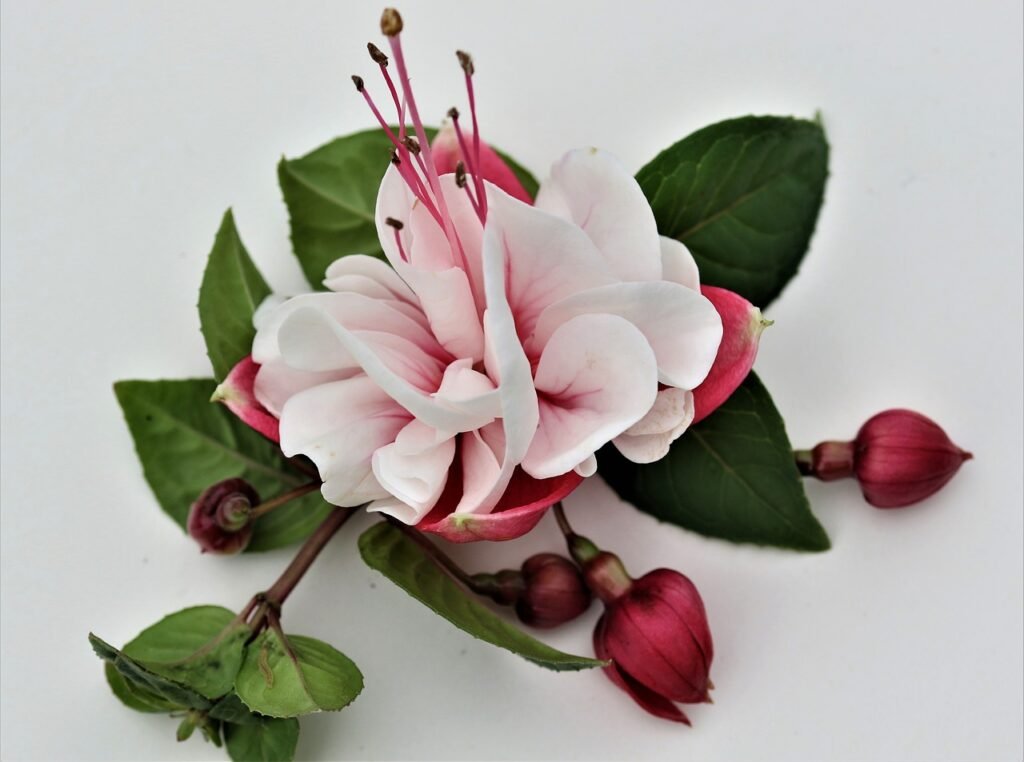Complete Guide to Growing and Caring for Daffodils
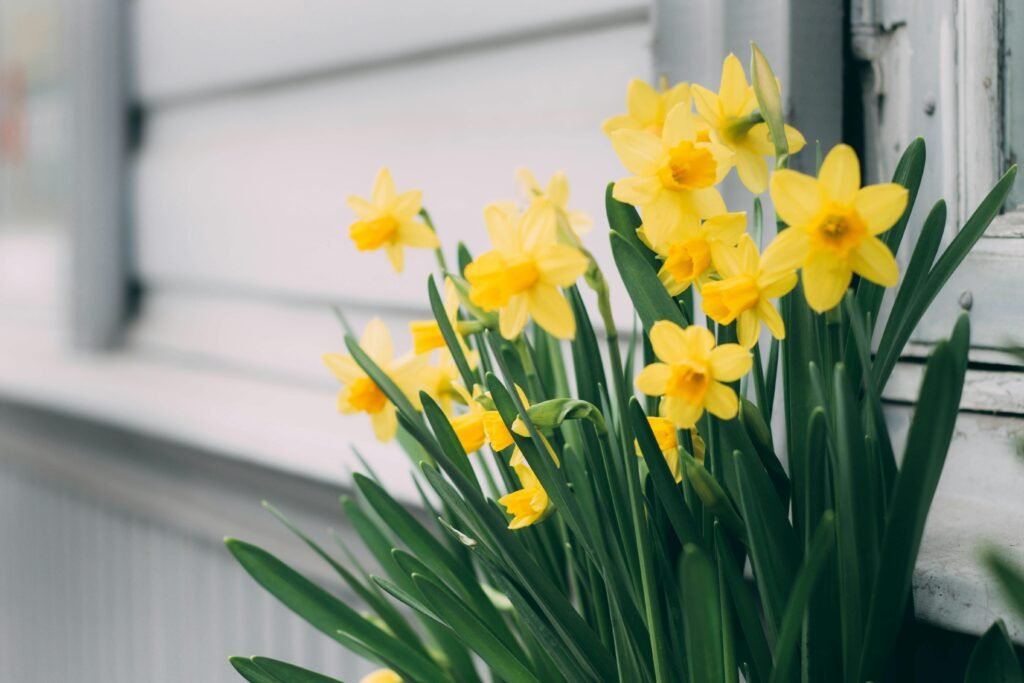
Daffodil flowers are very beautiful and are planted by garden lovers to enhance the beauty of the garden. It is a bulb-forming plant of the Amaryllis family. You can plant it in your garden.
Daffodils are an excellent plant for new gardeners. This is because it is easy to cultivate, does not require much care, and is easy to propagate quickly. In the spring season, the beauty of the garden is enhanced. There are about 50 species of this flower worldwide, and there are thousands of hybrid varieties. The daffodils are mostly red, orange, pink, white, and yellow.
How When And Where to Plant Daffodils Flowers
Here are a few things to know about choosing a daffodil bulb. For example, the bulbs should be large, healthy and strong. There are no black spots. Avoid soft and dry bulbs. Dry bulbs are less likely to form seedlings and soft bulbs indicate rotting.
Since daffodils bloom in spring, they can be planted in autumn. If you want to plant daffodils in your garden, you can plant bulbs from September to late November.
You can plant daffodils on the front boundary of your house, or on a wide plot of land. You can place it in front of your house if you want. Be sure the soil is well drained. Plant bulbs in such a place where there is a good arrangement of full sun and bright light.
The bulbs should be planted 3 to 8 inches deep in the soil. Keep a distance of at least 5 inches from one bulb to the other when planting. Since daffodils breed quickly, the distance can be increased according to your needs. If they are planted close together, they will not get enough space for their proper growth. It is best to keep a distance of 15 inches from one bulb to another.

Daffodil Care
Daffodil is a flowering plant that does not require much effort from gardeners. If proper care is taken at the time of sowing, then later more care is not required. It grows well with little care and brightens the garden.
Most daffodils prefer full sun and well-drained soil. In spring, the soil is moist, which is favourable for the growth of daffodils. Bulbs do not like wet, damp soil; they are very susceptible to rot and other diseases. The daffodil can remain in its previous place or the same container for several years, but after a year, remove and replace the top compost.
Light
Daffodils grow well in full sun. Plant them in a place that gets at least 6 hours of sunshine a day. However, there are a number of them that are good in partial shade and light shade.
In midsummer, they can be kept in a low shade, but in the early season, they are best kept in a sunny place. Daffodils are always facing the sun.
Soil
There is a possibility of rotting the daffodil bulbs. So check the acidity of the soil where you are planting. It prefers soil pH 6.0 to 7.0.
Daffodils grow well in well-drained, fertile, and loamy soil. Soil water is harmful to the soil. Prepare the soil with compost at the time of planting. You can also plant bulbs in containers if you want. Make sure that the delicate edge is placed at a depth of at least two times the size of the bulb.
Water
Daffodils need a lot of water to grow. After planting, water them and make sure the soil is about 1 inch wet. Water regularly until it starts to rain. When the flower dries after 4 weeks of flowering, do not water again. After flowering, the daffodils go dormant, and the bulbs are ready to bloom the following year. In hibernation, it prefers dryness.
Temperature and humidity
Daffodils can grow anywhere, but temperate regions are best for their growth. They can grow well in both wet and dry climates, as long as the soil is good.
Daffodil bulbs need to be planted in the autumn because they need the cool weather of spring for flowering. However, some varieties of it are good even in warm places, if watered properly.
Putting some mulch on top of the soil helps the daffodils retain water while they are growing and keeps the bulbs cool when they are at rest in the summer.
Fertilizer
Daffodils usually grow on their own, without the need for fertilizer. Food is obtained from the soil. But if your bulb is weak or does not flower on time, you can apply some fertilizer. Mix NPK fertilizer in the ratio of 10:10:10 and put it in the field; then they will grow well.
The advice is that it is better not to give solid foods such as bone powder because it takes a long time to get used to them.
Propagating Daffodils

Daffodils are easily propagated from bulbs. Bulbs can be removed and re-planted every four years. This will give them more land to grow. Here are the steps that people can follow to propagate the bulbs:
In the summer, after the daffodil leaves turn yellow and die, carefully dig out the bulb clusters. Shake off the dirt and allow it to dry in a shady place for at least two days.
Separate the small bulbs from the parent bulbs, and discard those that are soft or damaged.
You can re-install the bulbs if you want. Many gardeners collect them. If you want to collect, collect the large ones and leave them in the cold and dark until autumn, the month of planting. Make sure the bulbs are strong, large, and spotless.
How to Grow Daffodils from Seeds
It is a matter of time to plant daffodils from seeds and get flowers from those seedlings. You will see the flowers after 5 years. Therefore, many gardeners discourage themselves from sowing seeds. But if you want to plant from seed without ignoring it for a long time, then you can follow the following steps –
After flowering, collect the marbled seed pods. If the seed pods are wrinkled and brown, break them and remove the seeds from the inside. Keep the seeds until they fall off. Add seeds, 1/2 inch deep, into a pot or small pot. Cover the bowl with plastic wrap or plastic wrap and set aside. Seeds will germinate in the spring and form small, grass-like seedlings. If the plant is a little big, then keep it in a convenient place, and if it is a little big, then place it in the pot or field according to the shape of the plant.
Potting and repotting daffodils
In one pot, you can grow daffodils for 2-3 years at a time if the pot is deep enough. You can grow daffodils in containers in the winter if you place the container in the right place. You can follow the steps below to grow daffodils in containers:
Choose a pot that is at least 12 inches deep and 8–12 inches wide. Be sure the container has a hole for the water to drain.
Mix compost with soil and fill two parts of the pot.
Bulbs are placed at a certain distance. Make sure that there are gaps between them and that the bulbs do not touch each other.
Then cover them with soil and water.
Choose a cool and dark place where you will place the pot. The temperature should be between 4.4-7.2 ° C and the soil should be moist. You can keep it there for three months.
When the temperature reaches 10-18.3 ° C, you can bring the pot to a sunny place. Add water when the soil is dry.
In this way, when the flowering is over, you can put the bulbs back in your field.
Overwintering
Daffodils are resilient in the winter. Their tolerance can vary from species to species and from environment to environment. However, many gardeners make mulch to balance the moisture and temperature of the soil.
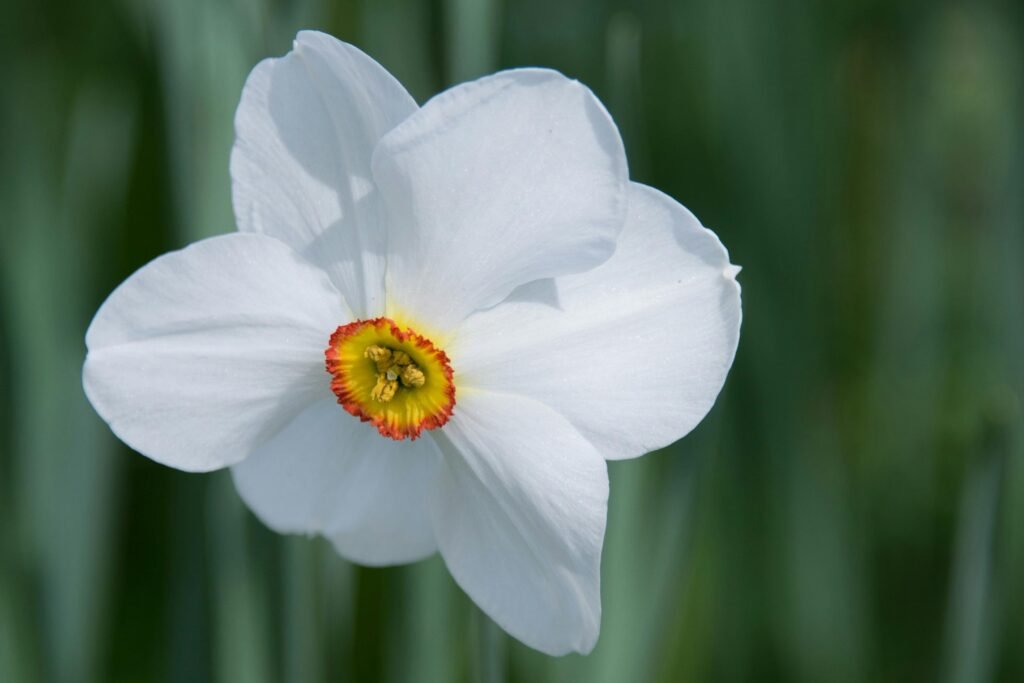
Common Pests and Plant Diseases
Daffodils are not attacked by insects and worms. Although it seems that the rats will destroy it they will not, because the daffodil bulb is toxic to the rats.
Sometimes, however, things can happen. A common problem with bulbs is that they can rot due to waterlogging. Because the yellow-stripe virus attacks due to excess water. This problem occurs when the leaves turn yellow. In this case, the bulb must be removed. Daffodil leaves often rot. This disease is caused by parasitic worms. Avoid growing daffodils in soil where nematodes are present. Bulb mite weakens the bulbs of daffodils, so they do not flower at the right time. This is a problem if you grow daffodils indoors. The solution can be sprayed regularly according to the instructions.
There is a type of fly that lays eggs at the base of the daffodil and grows inside its bulb. For this reason, soft bulbs should be avoided.
How to get daffodils to bloom
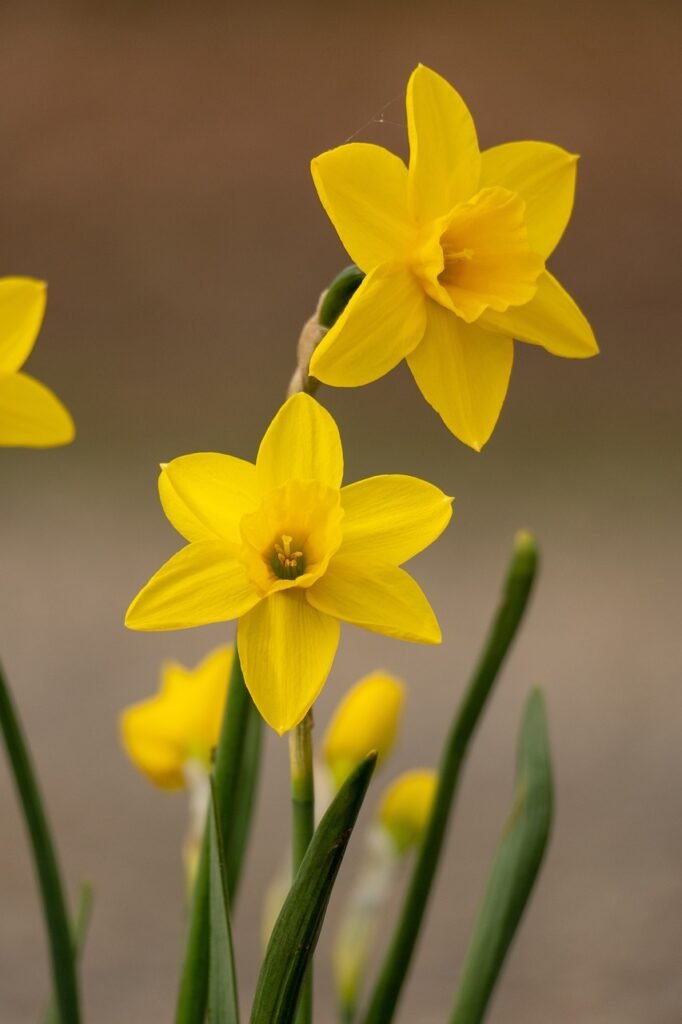
Although daffodils produce more flowers with less care, they may have some simple requirements. Keep them in check so you don’t miss out on Spring Flowers. For example:
Do not cut the leaves after the flowering season is over, as the leaves complete the process of photosynthesis and the bulb stores energy from there. So cut the leaves after a certain time.
Sometimes flowers don’t bloom at the right time. Maybe the bulbs are planted upside down. Small bulbs take 2-3 years to bloom. So plant big bulbs, or wait.
Daffodils grow well in nutritious soil and flowers. Be aware of the soil. Test the soil and take necessary action.
Common Problems with Daffodils
Daffodils are usually very reliable trees, but some problems can arise. After the flowering is over, the leaves should be allowed to die naturally without being cut. After the leaves die, the garden becomes empty and looks a little unsightly. To avoid such a situation, you can plant daffodils in the foliage of perennial plants, so that even if the season of daffodil flowers is over, your garden remains illuminated with other flowers.
FAQ:
Question: How long does the daffodil flower last?
A: Daffodils bloom for about six weeks on average. Depending on the cultivation and growing conditions, a continuous bloom can last up to six months. Once you cut a daffodil and put it in water in a vase, it can last up to two weeks.
Question: How many days after the flowering of the daffodil should the leaves be harvested?
Answer: Take the time to fade after the daffodil flowers bloom. Cut off the stem after the flowers have wilted. Wait until the leaves turn yellow or brown. Remove the leaves after 8 weeks.
Question: When do daffodils bloom?
Answer: The earliest varieties may bloom in January, but they are an isolated curiosity rather than a spring arrival. The daffodil season begins in early March and lasts until early May, weather permitting.



